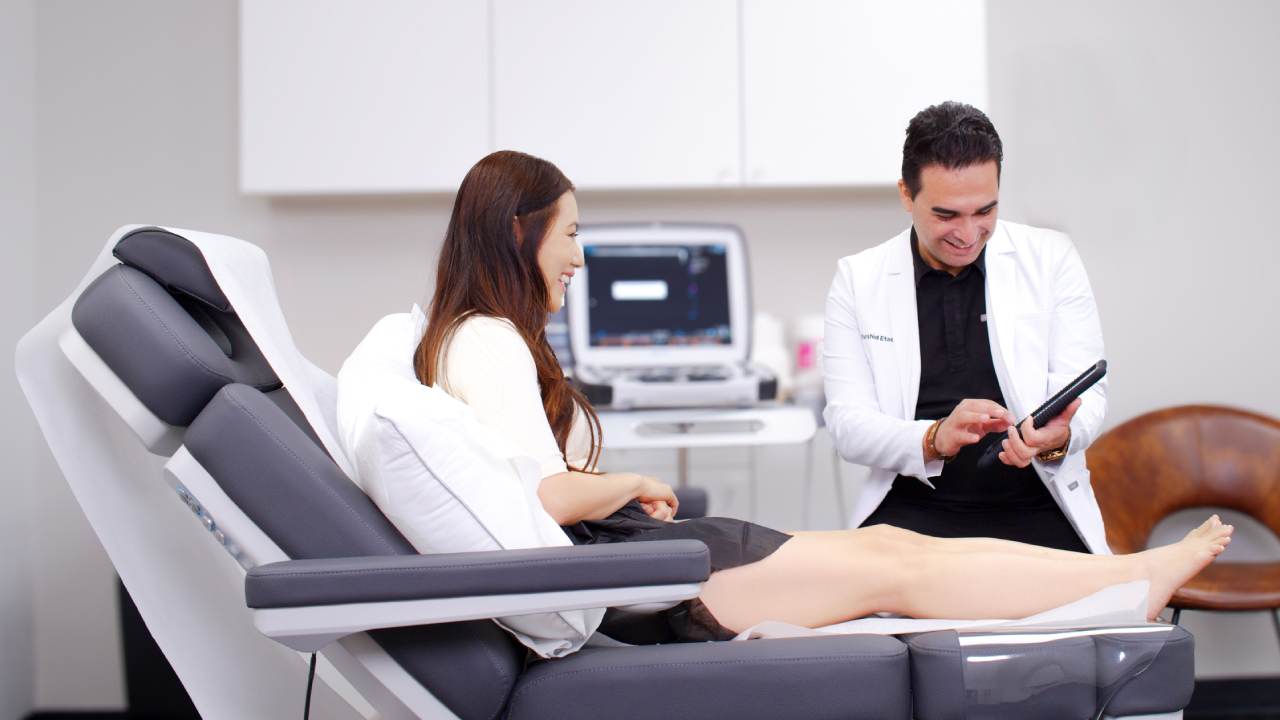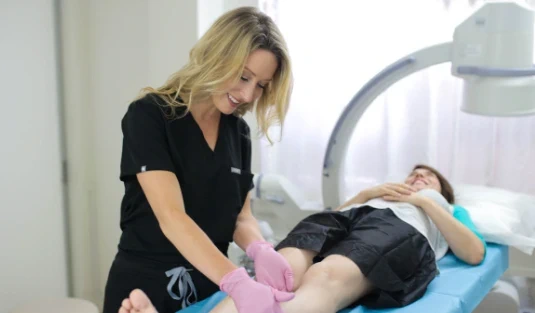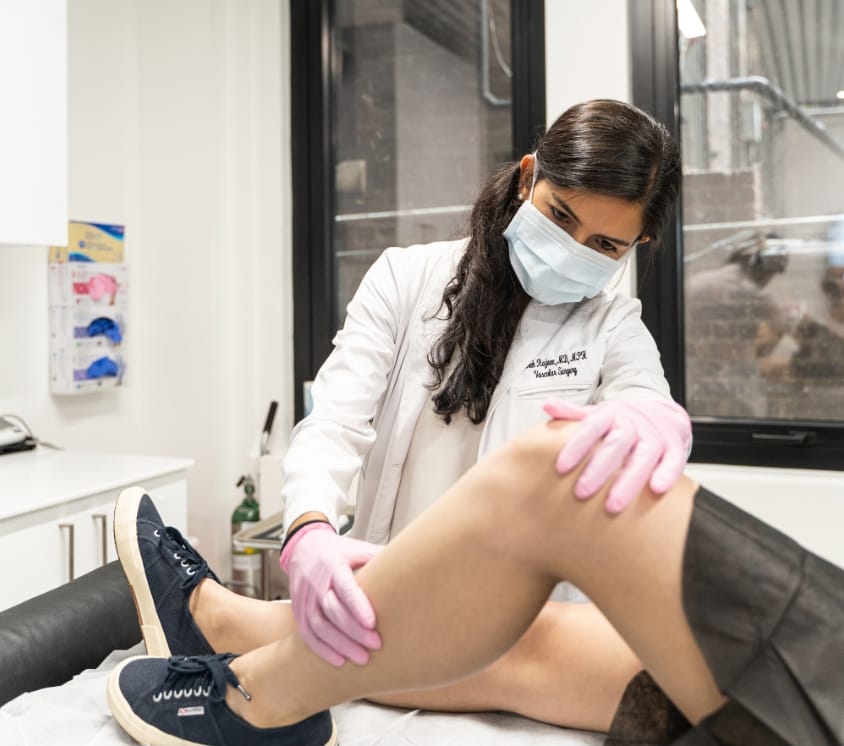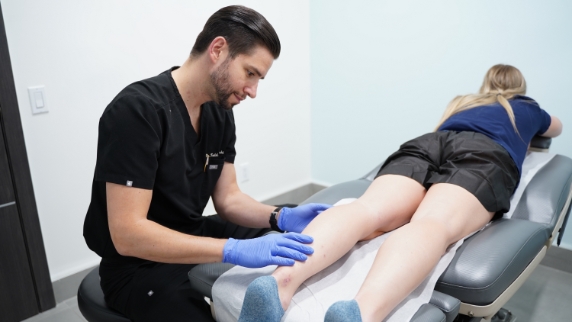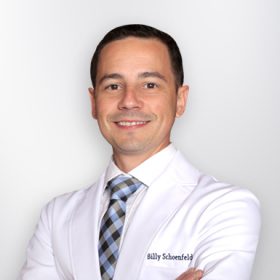Venous insufficiency, venous disease, or venous reflux is a common disease. Its major symptoms are varicose veins and spider veins. Symptoms of varicose veins in the legs are usually visible. They consist of large, bulging veins just beneath your skin’s surface. Varicose veins are so detectable that the only way to hide them is to wear long pants, dresses, or skirts. They mostly affect your thighs and the back of your calves and can be embarrassing and painful. Their presence is an indication that you have an existing venous reflux disease. So, educating yourself more about this disease and seeking help at a vein clinic if you have the symptoms is important. There are three renowned methods of treating chronic venous reflux that have caused varicose veins, spider veins, venous ulcers, swelling on ankles, and so on. These are:
- Venaseal™ Closure System
- Radiofrequency ablation
- Endovenous laser ablation
Each of the three treatment options is different and has pros and cons. To help you understand what they are all about, we will discuss each method next and then compare VenaSeal to each of the remaining two options.
VenaSeal Closure System
VenaSeal™ Closure SystemThis is a popular varicose veins treatment system. It is used to remove varicose veins that are near the skin surface. It leads because it is non-thermal, non-sclerosant and non-tumescent. In other words, the system uses a proprietary, clinically proven adhesive to seal the problematic vein. Thus, it is better than thermal-based techniques that put the tiny saphenous vein in danger of thermal damage during treatment. As an FDA-certified closure system, VenaSeal works safely and well. There is no need to use tumescent anesthesia when treating with VenaSeal, so there is no discomfort. How it works, also called superglue for veins, the VenaSeal closure system delivers an adhesive into the diseased vein via a catheter. Local anesthesia is often administered before accessing the affected vein through a tiny incision on your skin surface. As soon as the vein is accessed, a VenaSeal Catheter is positioned with ultrasound. Via the catheter, the VenaSeal adhesive is deposited into the affected vein. This causes the vein to seal completely. Blood is then re-directed to healthier veins. Then, the treatment site is protected with a bandage to prevent infection, and you will be free to return to work. As a minimally invasive procedure, VenaSeal causes just minimal pain. So, we advise you to go to a vein institute medical facility today and have ultrasound and other tests run on you. This will help your doctor diagnose your problem and design your precise treatment plan. If they pick VenaSeal™, it will be done as described above.
Benefits of VenaSeal
- It is the newest, most advanced treatment method today
- It triggers the least pain, as it is minimally invasive
- There is no need to use compression stockings after your treatment is over
- No admission to a hospital is needed
- You can resume work right away
Cons
- It is not a commonly covered method of treating venous insufficiency disease by insurance.
RadioFrequency Ablation or RFA
Radiofrequency ablation (RFA) is yet another recognized method of getting rid of varicose veins and pain. It is used to re-route blood circulation via healthier veins to the heart. RFA leads to the closure of the diseased veins and the process of re-routing blood is often done via radiofrequency energy. It is quick and painless.
How RFA is done
The Radiofrequency Ablation process entails numbing the insertion area with local anesthesia. If patients are being treated in a surgery center, monitored anesthesia care is often chosen. Then an image-guided ultrasound is used to position the closure catheter into the affected vein via a small cut in the skin. Prior to carrying RF or radiofrequency energy via the catheter, your vein will be seriously numbed. The energy releases heat that will cause the vein walls to attach, grow together, and make scar tissue.
This tissue will then be reabsorbed by your body. As soon as the broken veins in the legs are closed, blood flow will be re-routed to healthy vein networks. A bandage will then be put on top of the insertion site to prevent an infection and extra compression is then applied. Following this procedure, your best vein doctor might ask you to walk numerous times to avoid prolonged standing or sitting. As well, doing strenuous activities can be discouraged to boost the healing process.
Benefits of Radiofrequency Ablation
- RFA is an inpatient treatment procedure
- It causes less pain because it is minimally invasive
- Relieve from heaviness, fatigue and discomfort associated with venous reflux is felt within a short time.
- There is insurance coverage
Cons
- A small scar may be left behind on the insertion site
- Local soreness and swelling may attack in the first week after treatment
Endovenous Laser Ablation or EVLT
This treatment is often done in the doctor’s office or clinic. It is used to destroy any vein that is not healthy and one that can negatively affect your circulatory health. The removal of such a vein does not cause any adverse effect on your body. Endovenous laser ablation is one of the least invasive methods of damaging veins.
How EVLT works
The first step is usually done with a topical anesthetic rather than a needle to numb your skin. Next, an 810nm diode laser fiber is inserted into the damaged vein. Only verified faulty veins are treated with the laser and are identified with the ultrasound. After the insertion, the laser is heated gradually to ensure that the laser energy destroys the vein walls. This causes the walls to shrink and close completely. EVLT takes anywhere between half an hour and a full hour, based on how large the area to be treated is. Your vein specialist will remove the probe and apply a small wound dressing to keep the area free from germs as soon as the procedure is completed. A compression bandage may also be applied for a whole week. This technique is used to treat big varicose veins.
Pros
- You have minimal chances of developing stasis ulcers
- Substantial relief from the pain, heaviness and swelling might be attained
- More efficient blood flow
- Feel more confident after the removal of the large varicose veins
- It’s minimally invasive.
- It is FDA-approved and safe
Cons
- While the success rate is up to 98 percent, there is a 7 percent chance that your varicose veins could recur only after two years
- There may be minor bruising and soreness
- Phlebitis that may last for three to seven days
- Deep venous thrombosis
VenaSeal™ vs. Radiofrequency Ablation (RFA)
Similarities
- Both treat venous reflux disease.
- Both are minimally invasive and performed via a small incision with a catheter.
- Both require local anesthesia to numb the treatment area.
- Both reroute blood flow through healthier veins once the affected vein is closed.
- Both are effective for eliminating varicose veins and restoring leg function.
Differences
- VenaSeal™ uses a medical adhesive to close the vein, while RFA applies heat energy.
- RFA leads to scar tissue formation, whereas VenaSeal™ does not cause noticeable tissue changes.
- VenaSeal™ has no downtime, while RFA requires one to two days of reduced activity.
- Compression stockings are required after RFA, but not after VenaSeal™.
- RFA is widely covered by insurance, while VenaSeal™ may not be, depending on the provider.
VenaSeal™ vs. Endovenous Laser Ablation (EVLA)
Similarities
- Both effectively treat venous reflux disease.
- Both reroute blood circulation to healthier veins after sealing the affected vein.
- Both are FDA-approved, minimally invasive treatments.
- Both require local anesthesia and a catheter-based procedure.
Differences
- VenaSeal™ is newer and may provide longer-lasting results, while EVLA results typically last around two years before recurrence of varicose veins.
- EVLA is highly effective for larger varicose veins, whereas VenaSeal™ is ideal for smaller veins and underlying venous insufficiency.
- EVLA uses laser heat to close the vein, while VenaSeal™ uses a specialized adhesive.
- Both procedures have minimal risks, but EVLA may cause more post-procedural discomfort due to the heat applied during treatment.
Alternatives to VenaSeal, EVLA and RFA
What other options do you have if you don’t want to undergo any of the three treatment methods described above? First, you can undergo leg vein surgery, a method used in the past. This is the conventional way of eliminating varicose veins. It is more painful compared to any of the therapies mentioned above and requires a longer recovery period. Unlike RFA, EVLA, and VenaSeal™, which require only local anesthesia, surgery is done under general anesthesia. It leaves behind a scar and a couple of incisions. Unless your doctor asks you to do surgery, it is not a good option, considering that modern technology has enabled doctors to discover minimally invasive and easier treatment methods.
Another method is sclerotherapy, which is only great if you have smaller veins. A disadvantage with this is that sclerotherapy for saphenous veins needs several treatments, and varicose veins keep returning. It is not ideal for people who have injections. Finally, you can choose ambulatory phlebectomy. However, your specialist is the only person who can recommend or discourage any of the options.
Cost of EVLA, RFA and VenaSeal™
The cheapest of the three are RFA and EVLA. This is because the two methods are covered by medical insurance and Medicare. As long as you can prove to your insurer that treatment of your venous reflux is medically needed, your cost will be paid. They might ask for evidence, and in this case, pain relief medicines that you have taken for the last six months and/or compression stockings you have been wearing might be enough proof. If you want to learn more, call one of the top-rated vein doctors and ask about the costs. Some doctors offer all three services and can teach you more about them. Don’t be afraid to ask any question you might have before accepting to endure a given treatment procedure.
Why VenaSeal™ may be the best pick
Surgery, RFA, EVLA, and other varicose vein removal methods have existed for some time. VenaSeal™ is a new yet one of the most ultramodern methods of removing a diseased superficial vein. It does not use heat or needles, so pain is minimal, and recovery is almost instant. When your damaged vein is closed, you can run errands and do other things on your timetable. Being an outpatient procedure, you can expect the VenaSeal™ procedure to be completed in no time.
There is hardly any bruising because the process does not involve intense heat, and it doesn’t require a lot of local anesthesia shots to numb the area being incised. The small amount of adhesive used to seal your vein is absorbed by your body. As there are no injections or heat, VenaSeal is perhaps the most comfortable means of treating your varicose veins. If your doctor approves this method after diagnosing your condition, don’t hesitate to endure it.
Venous insufficiency is a progressive disease that, if untreated, can lead to pain, swelling, skin discoloration, and venous ulcers. Understanding the causes of spider veins is essential, as they may be an early indicator of varicose veins.
For expert guidance on the best treatment for your condition, consult a Board-Certified vein specialist at Vein Treatment Clinic.








